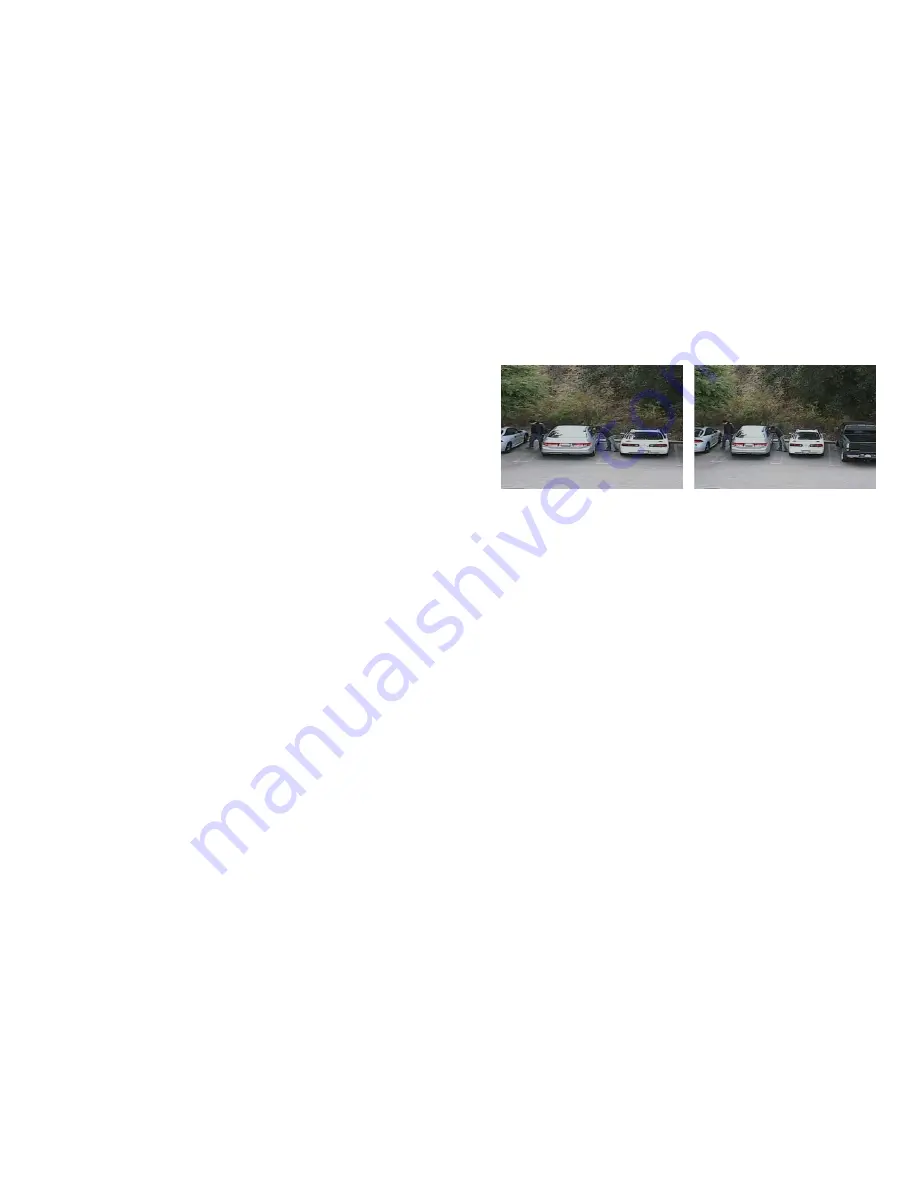
80
81
960H CAMERAS
A new standard for analog video cameras, 960H increases the width of the image from D1’s
720x480 pixels to 960x480 pixels. When connected to a DVR with 960H capability, this allows
the camera to take advantage of the wider aspect ratios of most monitors and HD screens to
deliver a wider, clearer image, without the distortion caused by stretching to fit the screen. This is
demonstrated in the image below:
Standard analog camera image stretched to fit
HD aspect ratio.
960H camera image.
PICTURE 2-13
You can use 960H cameras with analog DVRs that don’t have that technology, but the DVR will be
unable take full advantage of the capabilities for best results.
Because your camera is weatherproof, it requires less protection than weather-resistant cameras
and it can be placed in more exposed locations if needed. Keep in mind that most Q-See
cameras are designed to operate between 14°F to 122°F (-10°C to 50°) with a relative humidity of
up to 95%) and consider wind chill and other environmental factors when selecting your location.
Specialty cameras are also available from Q-See which are able to operate in more extreme
environments.
ADDITIONAL CONSIDERATIONS
Most users prefer to operate their systems with the DVRs recording only when motion is
detected. This provides the most efficient use of the hard drive’s capacity, plus making it easier
for a recording to be located. However, if the a camera’s location has a lot of “environmental”
motion, such as a fan, wind, or the like, you will receive a lot of “false alarms.” Usually, these
events can be avoided by simply adjusting the placement of the camera. Other situations may
require some fine-tuning of your settings.
Chapter 8 Alarms
, covers these settings in detail,
but some easily avoidable situations are presented below:
TV/Computer Screens.
If the camera can see a video screen, it will trigger a motion alarm
any time the screen changes, whether there is a video or simply a screen saver. The screen can
be masked out as described in
Section 4.2
. You can also reduce the level of motion sensitivity
in specific areas of the screen by following the instructions in
Section 8.3
.
Fans/Machinery.
Motion is motion and if machinery within the camera’s field of view starts
automatically, it will cause an alert. Similarly, if the camera is mounted on a wall with machinery on
the other side that causes it to vibrate, that can also cause it to detect motion. Moving machinery
within the camera’s field of view may be masked off as mentioned above, or motion detection may
be turned off for that channel. If there is another camera that covers access to the area where the
machinery is located, you can set it so that the first camera will only be recording when triggered
by a motion event detected by this second camera. See “
Triggers
” in described in
Section 8.3
.
Bugs.
An occasional insect flying through the field of view is usually not enough to trigger an
alert. However, some flying insects are attracted to infrared light and will swarm the camera.
This is usually a temporary situation that occurs at only a certain time of the year. Lighting the
area with yellow “bug light” of sufficient brightness can keep the camera operating in daylight
mode and keep the infrared LEDs turned off. A second solution is to set the channel to record all
the time, and turn motion detection off at night until “bug season” is over. Reducing the motion
sensitivity (
Section 8.3
) can also reduce alerts as can using another camera to trigger recording
as described above.
Additionally, keep your cameras clear of spider webs as the movement of the webs due to wind
or critters in the web will cause an alert. The reflection of the infrared off the webs and back into
the camera will also reduce the night vision range.
Snow/Rain.
As with bugs, this is usually a seaonal event and may require motion detection to be
temporarily disabled to avoid false alarms. However, positioning the camera further under shelter,
such as closer to the wall and away from the edge of the eaves, can make the rain or snow too
small for the camera to notice. Adjusting motion sensitivity may also help in some situations.
















































